Port of Busan will open its first automated terminal In 2023 using Korean cranes
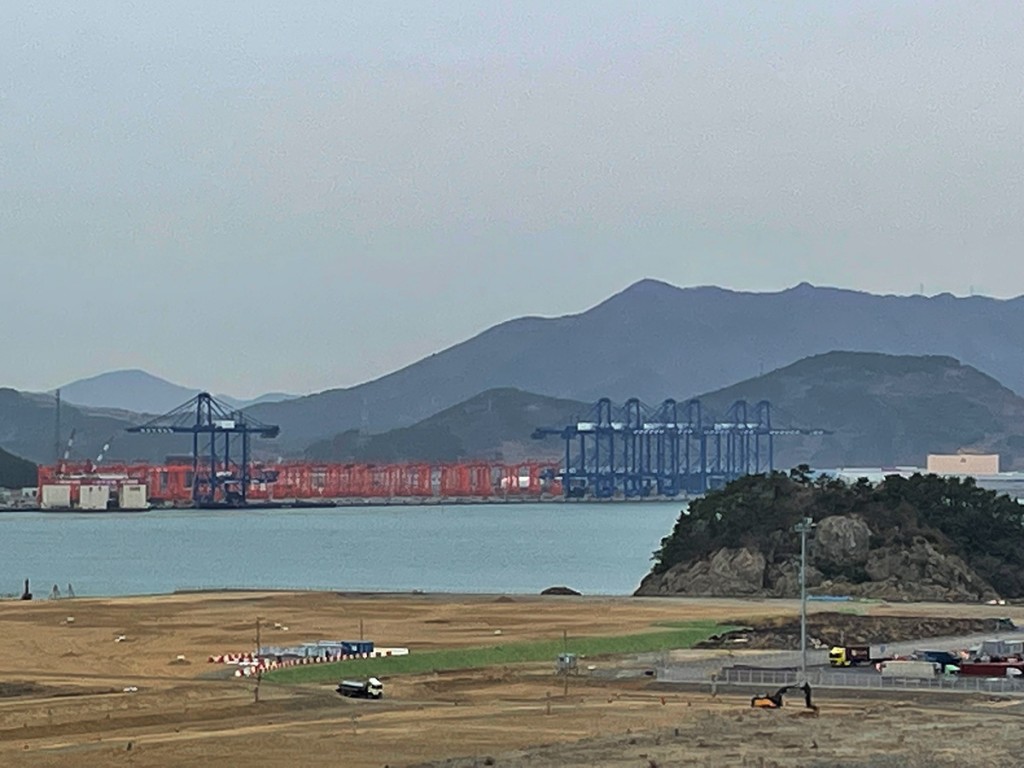
The Busan Port Authority (BPA) expects to open its first totally automated container terminal in the latter part of 2023 and feature ship to shore cranes built in Korea.
In an interview with AJOT at BPA headquarters in Busan, Korea, E. H. Lee, BPA’s director of marketing and international affairs, said the new terminal will feature Korean-built cranes that will also be automated.
In 2022, the Port generated 22 million TEUs of container volume and was the seventh largest port in the world.
Lee told AJOT that BPA’s New Port opened in 2006 was built because older terminal facilities at Busan’s harbor were insufficient to meet the growth in ocean carrier volumes.
He said the New Port container terminals opened in 2006 and the original budget for their construction was $10 billion.
Lee said the eventual New Port expansion cost will total about $32 billion when completed “and will be finished around 2040-2050. We are not sure yet because we have a trigger rule related to volume reaching a certain point.”
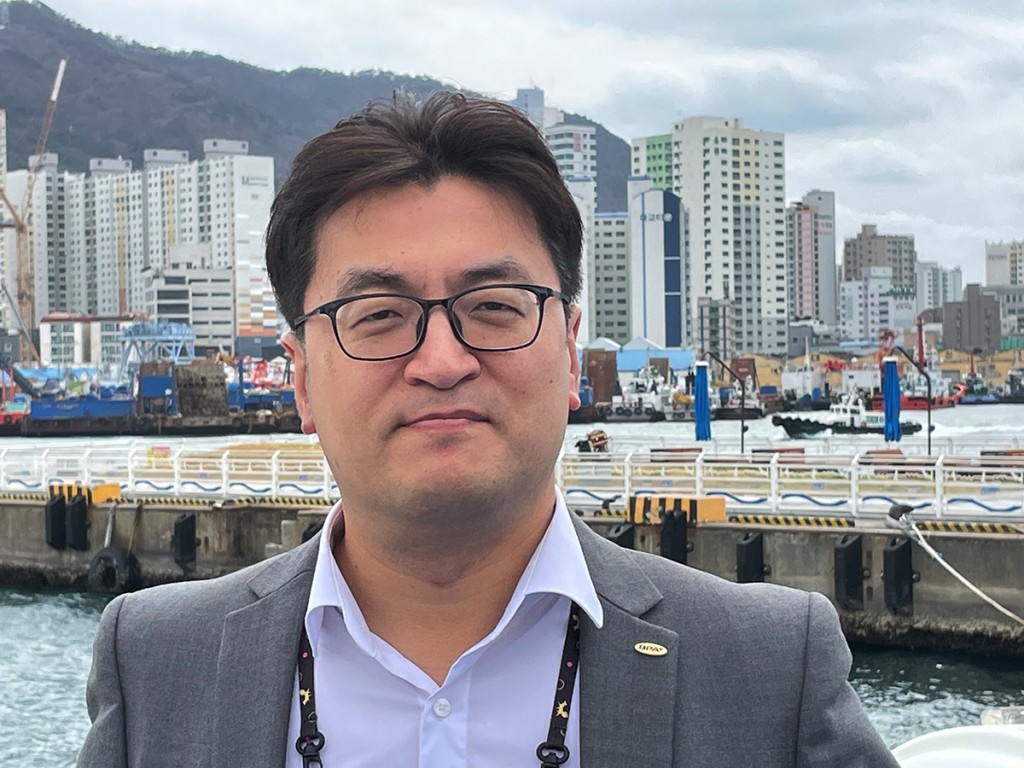
New Automated Container Cranes Made in Korea
The new automated container terminal will be developed in two phases. The first phase will be opened in 2023. In four years, the second part of the terminal will be opened: “This will be the first terminal at the Port of Busan that will be fully automated. The terminal will use remotely controlled ship to shore cranes. It will also utilize fully automated guided vehicles or AGVs.”
A major feature will be the Korean-built ship to shore cranes: “We stopped producing gantry cranes in Korea 20-30 years ago. So, in most cases, either Japanese or Chinese container cranes were being used. Now for the first time, Korean gantry cranes will be installed.”
Lee identified Hyundai as the crane builder.
He said: “The manufacturing infrastructure for the container cranes needs a long-term contract. Because it requires a lot of fixed costs to develop the manufacturing of that magnitude. We needed a long-term commitment for the manufacturing company … So, in the next … phase, we will keep ordering cranes from the Korean manufacturing company. And this will require support for after sales service and maintenance.”
Lee noted that concerns about security from foreign built cranes have been raised and noted that building the cranes in Korea is “good news” because: “The BPA would like to invigorate the Korean manufacturing base that has been moving to China. And we would like to slow down the manufacturing shift. Nowadays, we have made a good move because of the concerns about surveillance issues from other cranes. This has added more momentum for our move to source from Korean manufacturing. I think this may be a very smart decision.”
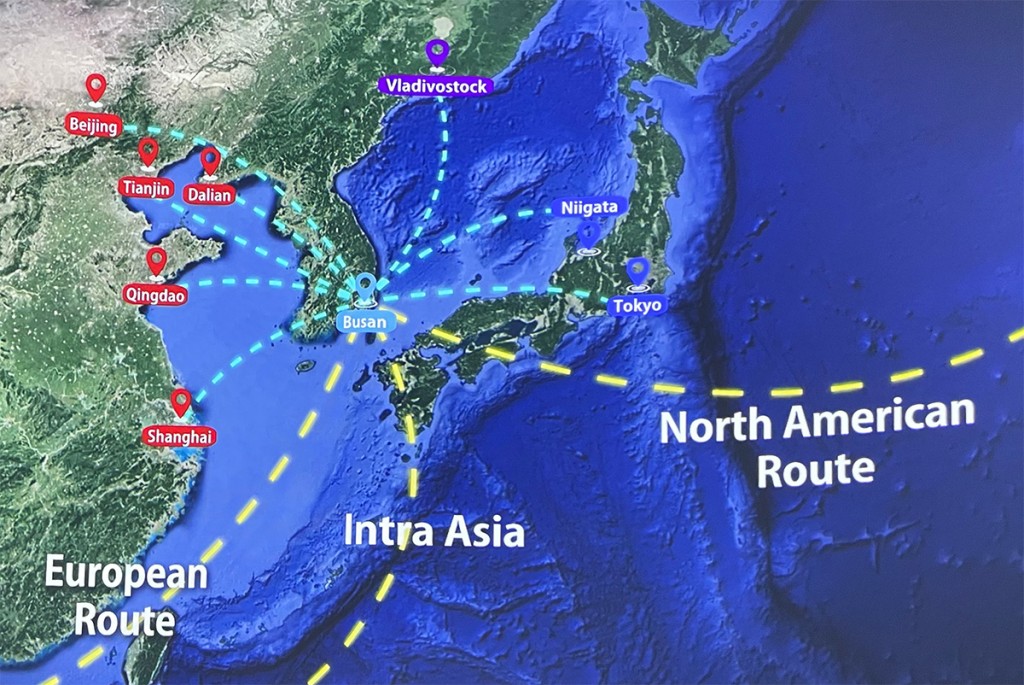
The Master Plan
South Korea develops its Port’s Master Plan every ten years. And every five years, it is modified: “So, right now, 70% of container cargo is handled at the New Port. And 30% is handled in the North Port.”
The North Port still has three container terminal operators: “And the New Port now has six dedicated container terminal operators. Altogether we have nine dedicated container terminal operators.”
The Ministry of Oceans and Fisheries issues the Master Plan for the ports in Korea: “There have been calls for the ports to be run by municipalities but as we see in the case of Japan, that is not as successful as when port policy focuses on a national basis.”
Busan is the world’s second largest in terms of containers transshipped. The Port of Singapore is No.1 with 88% of its containers being transshipped compared to Busan with 55%.
Lee said Japan has been a major source of transshipped containers: “Those Japanese shippers in the small regional municipalities have two options for exporting their cargoes. They can truck transport their cargoes to main ports such as Yokohama. Or they can use feeder ships to transport their cargoes to the Port of Busan and from there to the United States,” and other destinations.
The issue in Japan “is that trucking costs are very expensive. From Niigata to Yokohama, the trucking cost can be up to $2,500. In contrast, the cost of trucking cargo over a similar distance in Korea … from Seoul to Busan … is about $1,000 dollars,” Lee added.
Lee said that using a feeder ship to transport cargoes “from Niigata to Busan costs about $200 dollars” and when you add the unloading of the containers, another $60.
Trucking cost is not the only disadvantage for Japanese ports. Another issue is connectivity, which relates to the number of ocean carrier’s services operating at the port: “In the case of Yokohama, Yokohama only has 7 or 8 Transpacific services. At Busan there are 40 Transpacific services. So, frequency wise, Busan is better.”
Altogether, the price saving for a smaller Japanese port going to Busan as opposed to Yokohama is between 10% to 30% cheaper.
In the case of China “we divide the China ports into three regions North China, East China and South China. In the case of North China, you can save time shipping directly to Busan as opposed to other gateway ports. … This is because Northern Chinese ports such as Dalian has zero and Tianjin has one Transpacific service. So, they need feeder ship services to Busan.”
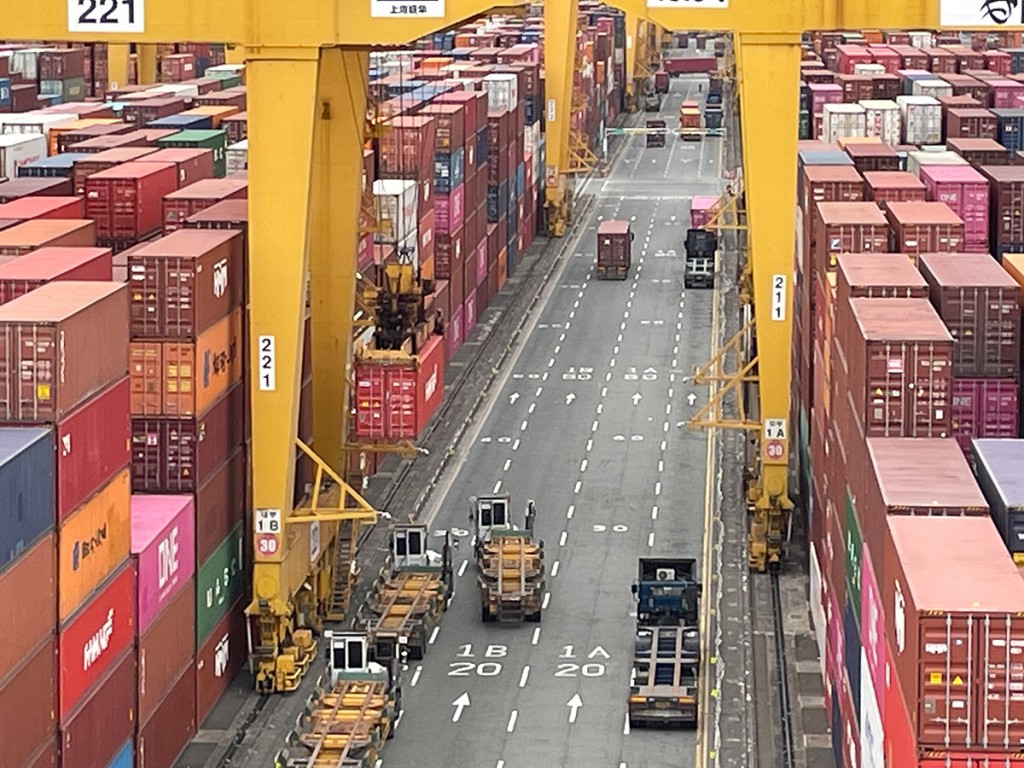
24/7 Busan Port
Lee said the Port has “had 24/7 operations at the Port of Busan since we’ve began operations. Nobody questions why we operate at 24/7 because everybody else is operating at 24/7. And the carriers need to maximize their assets, vessels, and containers.”
The disadvantage is higher costs for carriers and throughout the supply chain: “So when some ports operate only in the daytime, then that is a loss for the carriers. In the case of the United States, your supply chain might suffer but that is the destination for the import cargoes.”
Lee notes that the disadvantage is more pronounced in Japan: “Japan has lost its connectivity.”
For example, “In Japan, Kobe used to be the Northeast Asia transshipment hub. But after the earthquake that hit Kobe, that transshipment business went to Busan and never came back to Kobe. The reason: Kobe does not operate 24/7 and so it became too expensive to transship from there. So, there was no reason to go back to Kobe.
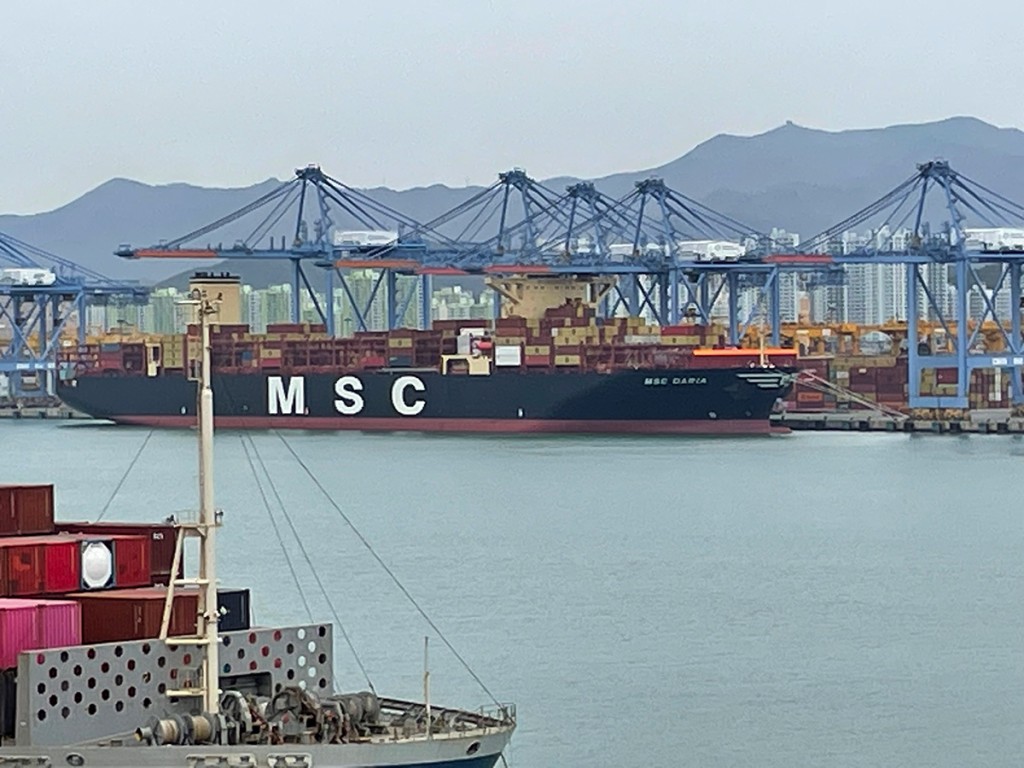
In the case of the United States, the imports from China were destined for the US. So, a lack of 24/7 did not matter as much as it did to Japan.
Lee says the most important priority for operating 24/7 operations is: “The port workers must be working 24 hours a day. The workers who work at night are willing to do so because they get paid double. The warehouse workers are a secondary priority. Having the port work 24 hours per day allows the warehouses and the truckers to work within the port’s schedule of operations. And this increases productively for the carriers and reduces their costs as opposed to places where the ports do not operate on a 24/7 basis.”
The lack of 24/7 operations create the risk that ocean carriers will move their sailings to another port: “If you don’t handle the carrier’s cargo efficiently, they might go somewhere else. And most ports in the world operate at 24/7. And it never was an issue at the Port of Busan because we operated at 24/7 from the get-go.”
© Copyright 1999–2024 American Journal of Transportation. All Rights Reserved

